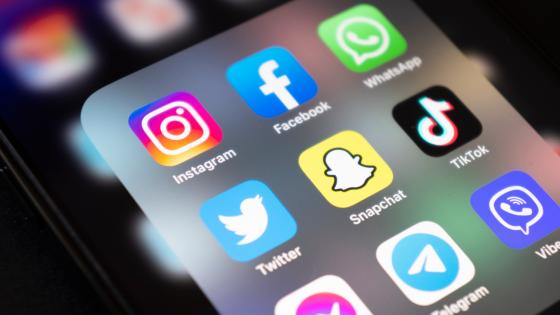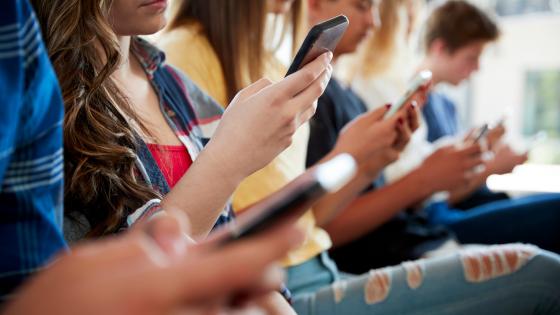Imagine a university that rewards professors based on the number of citations to their research. In response, a group of colleagues might agree to cite each other’s work in every paper they write. What would be the positive and negative effects of our imaginary citation cartel? Economists are not known for excessive citations, which could be explained by positive externalities: the citing author bears all the costs, while the cited author reaps the benefits. As citing authors can’t internalise this positive externality, we end up with fewer citations than is socially optimal.
A citation cartel could solve this issue via reciprocal behaviour: by the cartel agreement, members would receive as many citations as they give. However, this can go too far. If this agreement requires citing unrelated papers, it might be good for group members but lead to meaningless literature reviews. Thus, the benefit of such agreements depends on their nature: making more effort to cite related papers could be good, while citing unrelated papers is probably bad.
Such academic citation cartels are not purely hypothetical. Academic journals have been found to form agreements to boost each other’s journals in the rankings (Van Noorden 2013). Similarly, universities have boosted their colleagues’ citation counts to advance in university rankings (Catanzaro 2024). Due to such citation patterns, Clarivate (Thomson Reuters) has excluded journals from Impact Factor listings, and most recently excluded the entire field of mathematics (Van Noorden 2013, Catanzaro 2024).
Academic citation cartels are difficult to study because there is no data on explicit cartel agreements. But in influencer marketing, cartel agreements are observable. In our new paper (Hinnosaar and Hinnosaar 2024), we study how influencers collude to inflate engagement and the conditions under which influencer cartels can be welfare-improving.
Distorted incentives and fraudulent behaviour in influencer marketing
Influencer marketing has become a key part of modern advertising. In 2023, spending on influencer marketing reached $31 billion, already rivalling the entirety of print newspaper advertising. Influencer marketing allows advertisers fine targeting based on consumer interests by choosing a good product-influencer-consumer match.
Many non-celebrity influencers are not paid based on the success of their marketing campaigns. In fact, less than 20% of companies track the sales induced by their influencer marketing campaigns. Instead, influencers’ pay is based on impact measures such as the number of followers and engagement (likes and comments), furnishing an incentive for fraudulent behaviour – for inflating their influence. Inflating influence is a form of advertising fraud that causes market inefficiencies by directing ads to the wrong audience. An estimated 15% of influencer marketing spending is misused due to exaggerated influence. To address this issue, the US Federal Trade Commission proposed a rule in 2023 to ban the sale and purchase of false indicators of social media influence. Cartels provide a way of obtaining fake engagement that does not fall directly under the proposed rule – because no money changes hands – but is still in the same spirit. While there is substantial literature on fake consumer reviews (Mayzlin et al. 2014, Luca and Zervas 2016) and other forms of advertising fraud (Zinman and Zitzewitz 2016), the literature on influencer marketing has focused mostly on advertising disclosure (Ershov and Mitchell 2023, Pei and Mayzlin 2022, Mitchell 2021, Fainmesser and Galeotti 2021), leaving the fraudulent behaviour unstudied.
How do Instagram cartels work?
An influencer cartel is a group of influencers who collude to boost their advertising fees by inflating engagement metrics. As in traditional industries (Steen et al. 2013), influencer cartels involve a formal agreement to manipulate the market for the members’ benefit. The cartels operate in online chatrooms. The screenshots below show how one such cartel operates in practice. The image on the left is from an online chat room, where cartel members submit links to their content for extra engagement. Before submitting a link, they must reciprocate by liking and commenting on other members’ posts. An algorithm enforces these rules. The image on the right shows these cartel-induced comments on Instagram. The cartel history and rules make it possible to observe which engagement (comments) originate from the cartel.
Figure 1 Left panel shows posts in online chatroom submitted for cartel engagement; right panel shows Instagram comments originating from the cartel
Source: Left panel is a screenshot of a Telegram group; right panel is a screenshot from Instagram. To preserve anonymity, account identifiers are blurred and the photo is replaced with an analogous photo by an AI image generator.
What distinguishes ‘bad’ from ‘not-so-bad’ cartels?
Our theoretical model formalises the main trade-offs in this setting, in the spirit of the imaginary citation group discussed earlier. The model focuses on strategic engagement, a decision that affects social media content distribution and consumption (Aridor et al. 2024) but has been underexplored (with the exception of Filippas et al. 2023, who studied attention bartering in Twitter). Engaging with other influencers’ content has a positive externality, leading to too little engagement in equilibrium. Forming a cartel to reciprocally engage with each other’s content can internalise this externality and might be socially desirable. However, it can also result in low-value engagement, especially when advertisers pay based on quantity rather than quality.
The key dimension to differentiating ‘bad’ from ‘not-so-bad’ cartels is the quality of cartel engagement. By ‘high quality’, we mean engagement coming from influencers with similar interests. The idea is that influencers provide value to advertisers by promoting a product among the target audience: people with similar interests, such as vegan burgers to vegans. If a cartel generates engagement from influencers with other interests (meat lovers), this hurts consumers and advertisers. It hurts consumers because the platform will show them irrelevant content, and advertisers are hurt because their ads are shown to the wrong audience. Whether or not a particular cartel is welfare-reducing or welfare-improving is an empirical question.
Evaluating engagement quality using machine-learning methods
To answer this empirical question, we use novel data from influencer cartels and machine learning to analyse Instagram text and photos. The cartel data allows us to directly observe which Instagram posts are included in the cartel and which engagement originates from the cartel (via cartel rules). Our dataset includes two types of cartels, differentiated by cartel entry rules: topic cartels (which only accept influencers posting on specific topics) and general cartels (with unrestricted topics).
Our goal is to compare the quality of natural engagement to that originating from the cartel. We measure the quality by the topic match between the cartel member and the Instagram user who engages. To quantify the similarity of Instagram users, we generate numeric vectors (embeddings) from the text and photos in Instagram posts using a large language model (Language-agnostic BERT Sentence Embedding) and an analogous large neural network (Contrastive Language Image Pre-training model). Then we calculate cosine similarity between the Instagram users based on these numeric vectors.
Are the cartels likely to be welfare-improving?
We find that engagement from general cartels is significantly lower in quality compared to natural engagement. Specifically, the quality of engagement from these cartels is nearly as low as that from a counterfactual engagement from a random Instagram user. In contrast, engagement from topic cartels is much closer to the quality of natural engagement.
The figure below illustrates these effects using raw data (see the paper for regression estimates, robustness checks, and additional analysis). It presents distributions of cosine similarity between the author and commenter, separately for general (left panel) and topic (right panel) cartels. It shows that non-cartel commenters (natural engagement) have the highest similarity with the author of the content, and random users have the lowest. Match quality from general cartels is similar to random engagement (left panel). In contrast, topic cartel engagement is much closer to natural engagement (right panel).
Figure 2 Probability density of authors’ similarity to commenters and random users in general cartels (left) and topic cartels (right)
Back-of-the-envelope calculations (based on regression analysis) show that if advertisers pay for cartel engagement as if it were natural engagement, they receive only 3–18% of the value with general cartels, and 60–85% with topic cartels. In other words, general cartels provide nearly worthless engagement for advertisers, while topic cartels cause less distortion.
Conclusions and policy implications
Our findings lead to three policy implications. First, since general cartels are likely to reduce welfare, stronger regulation of their activities would benefit society. Second, regulations that prohibit buying and selling fake social media indicators should also cover in-kind transfers, such as paying for engagement with reciprocal engagement. Third, the current practice of rewarding engagement quantity encourages harmful collusion. A better approach would be to compensate influencers based on the actual value they provide. Luckily, many advertisers are already moving in this direction. Until they get there, platforms could improve outcomes by reporting match-quality-weighted engagement.
References
Aridor, G, R Jiménez-Durán, R Levy and L Song (2024), “The economics of social media,” VoxEU.org, 20 May.
Catanzaro, M (2024), “Citation Manipulation Found to be Rife in Math”, Science 383 (6682): 470.
Ershov, D and M Mitchell (2023), “The Effects of Influencer Advertising Disclosure Regulations: Evidence from Instagram”, RAND Journal of Economics, forthcoming.
Fainmesser, I P and A Galeotti (2021), “The Market for Online Influence”, American Economic Journal: Microeconomics 13(4): 332–72.
Filippas, A, J J Horton and E Lipnowski (2023), “The Production and Consumption of Social Media”, manuscript.
Hinnosaar, M and T Hinnosaar (2024), “Influencer Cartels”, CEPR Discussion Paper 19079.
Luca, M and G Zervas (2016), “Fake It Till You Make It: Reputation, Competition, and Yelp Review Fraud”, Management Science 62(12): 3412–27.
Mayzlin, D, Y Dover and J Chevalier (2014), “Promotional Reviews: An Empirical Investigation of Online Review Manipulation”, American Economic Review 104(8): 2421–55.
Mitchell, M (2021), “Free Ad(vice): Internet Influencers and Disclosure Regulation”, RAND Journal of Economics 52(1): 3–21.
Pei, A and D Mayzlin (2022), “Influencing Social Media Influencers Through Affiliation”, Marketing Science 41(3): 593–615.
Steen, F, O Toivanen and A Hyytinen (2013), “Anatomy of cartel contracts”, VoxEU.org, 14 June.
Van Noorden, R (2013), “Brazilian Citation Scheme Outed”, Nature 500(7464): 510–11.
Zinman, J and E Zitzewitz (2016), “Wintertime for Deceptive Advertising?”, American Economic Journal: Applied Economics 8(1): 177–92.





